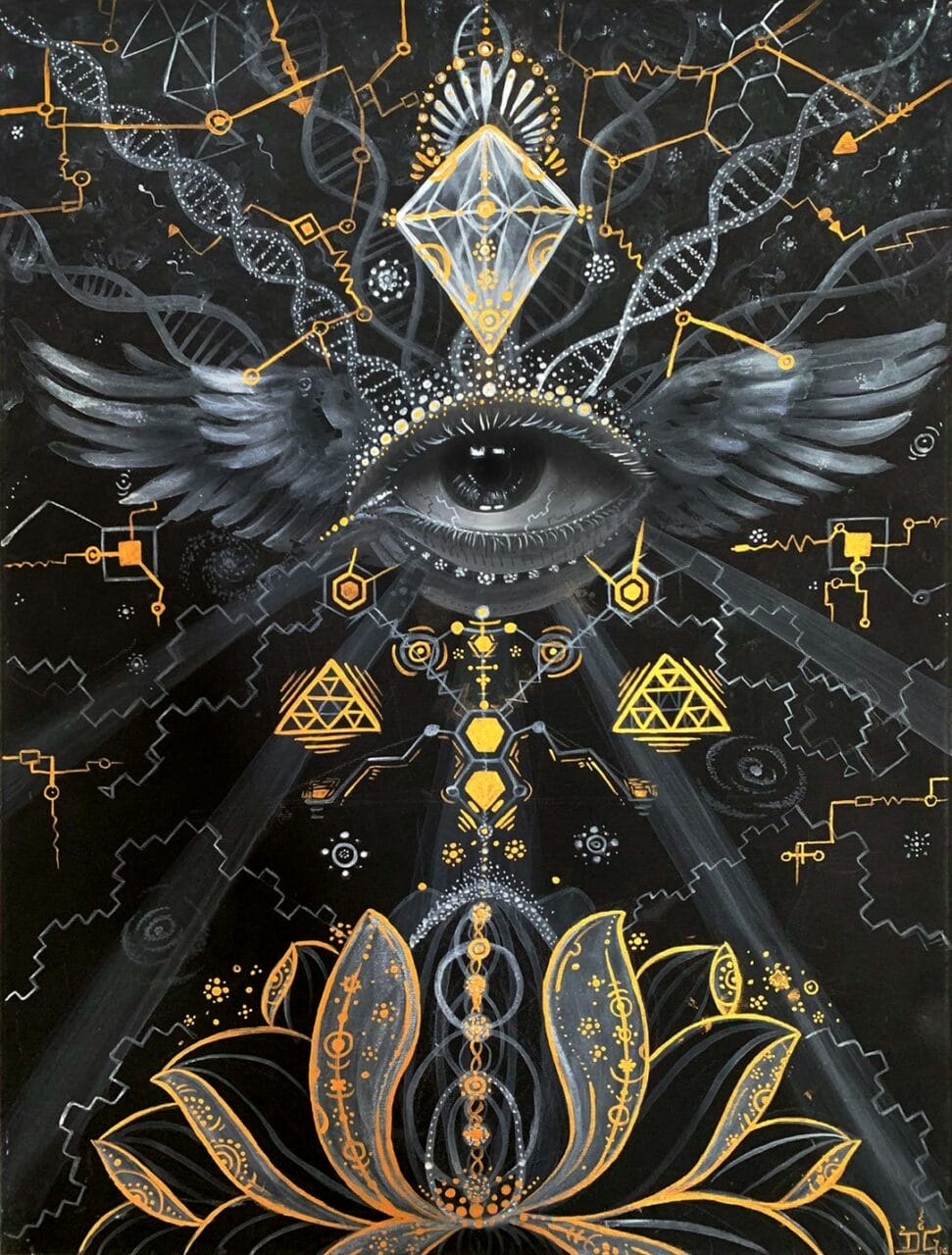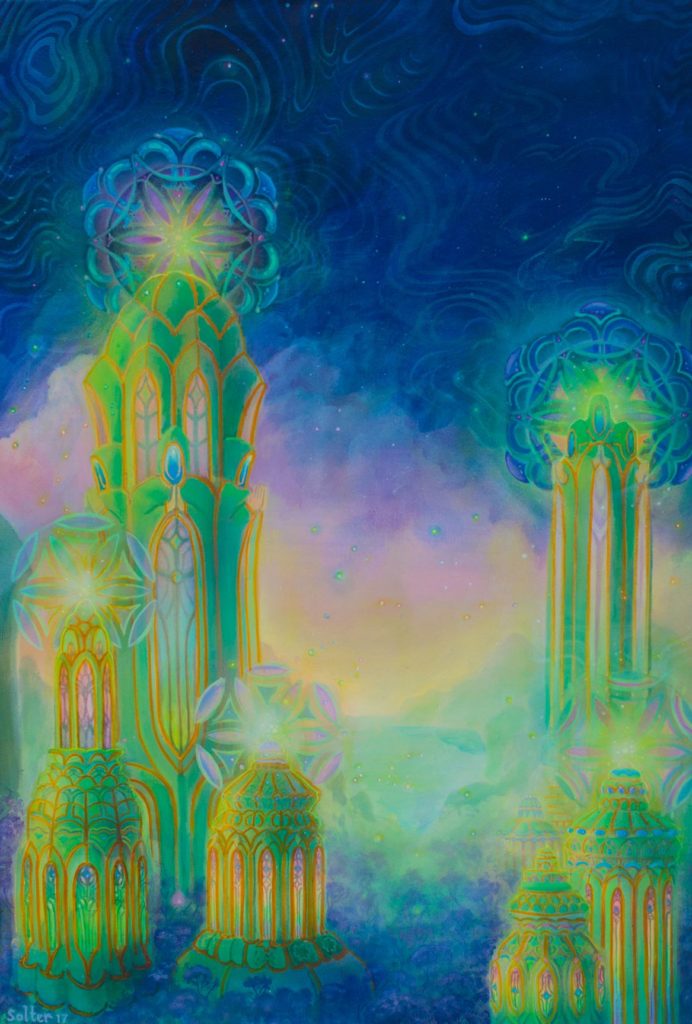
© Uni Kaya
The Historical Narrative of Shrooms
The existence of Shrooms can be traced back to 9000 BC according to historical evidence. These unique mushrooms, boasting over 200 distinct species, possess psilocybin – a compound that triggers hallucinogenic effects. These effects may result in altered perception, visual and auditory hallucinations, and profound mystical experiences. Various cultures and tribes have used these mushrooms in spiritual ceremonies, rituals, and practices for millennia. A large number of these historical instances originate from North and South America.
Shrooms in Ancient Times
Throughout history, many cultures have made use of natural psychedelics. Evidence found in the Sahara Desert suggests that humans were using Psilocybe Cubensis more than 7000 years ago. Archaeological findings show depictions of this mind-altering substance in prehistoric art across diverse regions. For instance, the indigenous tribes of North Africa in the Sahara illustrated its use in their paintings dating back to around 9000 BC. Similarly, the renowned Selva Pascuala mural rock painting in Spain, roughly 6000 years old, indicates the use of Psilocybe Hispanica in religious ceremonies. The influence of these substances on our cultural evolution, religion, art, societal norms, and everyday life is becoming increasingly clear. This substance has undeniably left a deep imprint on our culture and society.
Historical Overview of Magic Shrooms Usage
Historically,magic Shrooms have had a long history of usage. The psychoactive substance that we know today has crossed many centuries, with diverse practices associated with its use. Who can resist the gifts of nature? It’s time for Buy Mushrooms Online Canada to delve into the historical journey that has brought Shrooms to its current status.
Notable Highlights
- Dried Shrooms have been utilized in traditional rituals and spiritual healing for centuries. Today, they are used as a treatment for mental health conditions.
- Shrooms became a hallmark of the hippie culture and played a significant role in the psychedelic revolution, advocating its recreational use.
- Key figures such as Wasson, Sabina, and McKenna introduced psilocybin to the contemporary world.

© Jonathan Solter
Endorsing the Stoned Ape Theory
The Stoned Ape Hypothesis was proposed by Terence McKenna, suggesting that psilocybin might have influenced human evolution, especially the development of cognitive functions. Despite some objections, the intriguing premise of the theory remains undeniable.
Ancient Cultures and Sacred Practices
Past civilizations used symbols, art, and statues to represent cubes, indicating the ceremonial utilization of Shrooms. The Mayans and Aztecs used it to interact with otherworldly beings, including gods. In the culturally rich Aztec society, it was referred to as “teonanácatl“, which means “flesh of the gods”. The concept of a psychedelic experience was alien to them, leading to its interpretation as a divine entity. Moving north to Siberia, hallucinogenic Shrooms were used by Siberian shamans. They specifically used the hallucinogenic substance (Shrooms) known as “Amanita Muscaria” for spiritual healing and traditional rites, despite its toxic nature. This practice dates back almost ten thousand years. In African tribal rituals, particularly in the Congo and Zimbabwean tribes, cubes were used for communication with ancestors, inducing visions, and promoting spiritual healing. These historical cultures add depth to the understanding of contemporary psilocybin usage. The reverence for this substance in these societies originated from its divine connotations and its ability to trigger mystical experiences.
Shrooms in Myths and Folklore
Several accounts, including those by Gordon Wasson, have highlighted the connection between Shrooms and the mystical world, underscoring its significance in folklore and mythology as a medium for divine communication and enlightenment. In ancient India, the Soma—a ceremonial beverage mentioned in the Vedas—was thought to induce altered states of consciousness. Scholars like Wasson suggest that it could have been made from psychoactive plants, specifically fly agaric. Some even conjecture that this ancient drink might have incorporated a mixture of various plants. Regardless of its origins, the psychedelic history suggests that Soma facilitated the appearance of sacred symbols during rituals, symbolizing a portal to higher wisdom or spiritual enlightenment.
The Contemporary Era
A Brief Introduction to the
Origins
400;”>Historical documents from the period preceding the arrival of Columbus hint that the ancient Mayans and Aztecs utilized psilocybin Shrooms. During the 15th and 16th centuries, Spanish rulers deemed its usage as uncivilized and subsequently outlawed it. Despite this prohibition, shamans covertly persisted in ingesting magic Shrooms, thereby safeguarding their cultural heritage for over four centuries.
Re-Entry into the Western World
The 1950s witnessed a revival of these substances in the Western world, primarily due to the groundbreaking work of individuals such as R. Gordon Wasson, Roger Heim, and Albert Hofmann. During a visit to Mexico, they successfully isolated the two psychedelic components (psilocybin and psilocin) found in the Shrooms obtained from the Mazatec tribe. Subsequently, Wasson shared his journeys, applications, and insights about magic Shrooms in Life magazine. His articles and personal experiences led to the recognition of the substance as a potent hallucinogenic. By the advent of the 1960s, the substance had evolved into a symbol of the Hippie culture and was perceived as a conduit to spiritual awakenings. Nonetheless, its usage also instigated substantial disputes and spearheaded a revolution in the recreational consumption of hallucinogens.
Additional Evolution: Worldwide Prohibition
In 1971, the United Nations Convention on Psychotropic Substances classified psilocybin as a Schedule 1 illegal drug, alongside Lysergic Acid Diethylamide and N, N-Dimethyltryptamine. These substances were all considered to lack medicinal value and carry a high risk of abuse. This led to extensive criminalization in Western nations, including Canada and the U.S., severely limiting the spiritual and therapeutic use of the substance.
The Modern Resurgence of Psilocybin
In current times, there has been a softening of the strict regulations on psilocybin use, beginning with its decriminalization. This shift is in line with the UN’s provision for member nations to manage the substance as per their own judgement. Simultaneously, a growing body of research and clinical trials related to psychedelics and consciousness strongly endorses the potential medicinal uses of psilocybin. A 2021 study investigating the therapeutic utility of psychedelics suggests that the 1970 prohibition considerably hindered further research. However, an initial study in 2004 rekindled interest in psilocybin, suggesting potential applications in neuropsychiatry, especially for treating mental health disorders such as:
- Depression, Anxiety, and Stress
- Post-traumatic Stress Disorder (PTSD)
- Obsessive-compulsive Disorder (OCD)
- Substance Abuse (Aiding in Addiction Recovery)
- Excessive Alcohol Consumption and Drugs)
Media and Art’s Influence
The dialogue surrounding psychedelic cubes has broadened to the extent that they now feature in several forms of media. This renewed interest in these substances is fueled by various mediums like art, media, and literature. Films such as “Fantastic Fungi” by Director Louie Schwartzberg, alongside documentaries that explore their healing properties, have enhanced public understanding of their psychological and physical effects. “How to Change Your Mind” author, Michael Pollan, has delved into the use of psychedelics for mental health and spiritual development, thereby rekindling their societal and therapeutic relevance.
Prominent Historical Advocates of Fungi
- María Sabina: Originating from Mexico, this Mazatec shaman and poet, Sabina, played a role in bringing cubes to the Western world’s attention. She allowed Wasson to participate in her Shrooms rituals.
- Gordon Wasson: As a writer, Wasson is recognized for drawing international attention to the drug. His detailed account of his experiences with Sabina led to an enlarged understanding of its local use.
- Terence McKenna: A leading proponent for psychedelics, McKenna played a key role in emphasizing their cultural and philosophical significance. He popularized the “Stoned Ape” theory through his speeches, writings, and research, describing it as an instrument for cognitive enhancement that shaped society.
Timeline – A Concise Overview
with TRD.
| Prehistoric | Prehistoric use is represented by stone art found in the Sahara, Africa |
| Ancient | The Maya and Aztec civilizations incorporated teonanácatl into their religious and spiritual rituals. |
| 16th Century | Usage was discouraged due to its association with Indigenous beliefs |
| 18th Century | In 1799, the “intoxicating” effects of the drug came to light when four children inadvertently consumed Psilocybe Semilanceata, highlighting the potential negative implications of its use. |
| 20th Century | The drug was brought to the Western world by Wasson and Sabina, sparking the psychedelic revolution among hippies. The UN legalized the possession and consumption of the substance. |
| 21st Century | Clinical studies to verify its medical benefits are
The popularity of psilocybin in therapeutic settings is on the rise. It’s even gained the approval of Health Canada through their Special Access Program. |
Embracing the Psychedelic Era and Beyond: Purchase Shrooms From Buy Mushrooms Online Canada
Buy Mushrooms Online Canada is committed to promoting the consistent use of psilocybin cubes, supported by robust scientific evidence. We believe this will continue until they achieve worldwide acceptance. Our online Shrooms store is prepared to facilitate this evolution. We offer a wide variety of products to attract customers, encouraging them to embark on the enlightening and therapeutic journey of psilocybin. Secure your preferred items from Zoomies today.
Commonly Asked Questions
No, Amanita Muscaria does not contain the active ingredients found in Psilocybe Cubensis. Instead, the psychoactive substances in fly agaric are muscimol and ibotenic acid. One prevalent theory suggests that Soma’s origin is a combination of various psychoactive plants. Likewise, ayahuasca is a beverage that alters consciousness. The only link between the two is the notion of Soma as an analogue of ayahuasca. It was examined for potential Shrooms poisoning after being classified as a toxic Shrooms. Today, we recognize it as the Psilocybe Mexicana.

